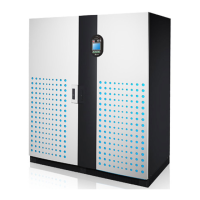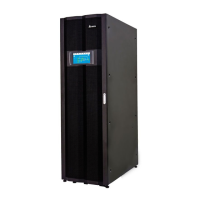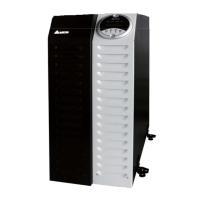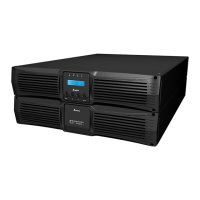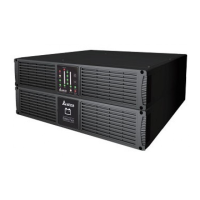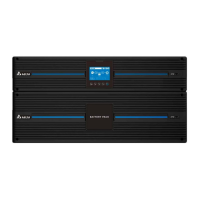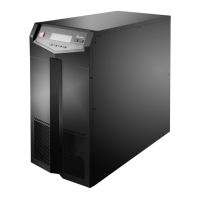61
UPS Capacity
DPS
300kVA
DPS
400kVA
DPS
500kVA
DPS
600kVA
Input Switch (Q1)
630A 800A 1000A 1250A
Bypass Switch (Q2)
630A 800A 1000A 1250A
Manual Bypass Switch (Q3)
630A 800A 1000A 1250A
Output Switch (Q4)
630A 800A 1000A 1250A
External Battery Cabinet’s Switch
(Q5)
1000A 1250A 1400A 1700A
NOTE:
1. In accordance with National Electrical Codes (NEC), please install a suitable
conduit and bushing for cable protection.
2. Please refer to national and local electrical codes for acceptable non-fuse
switches, breakers and cable sizes.
3. The cables mentioned in
Table 5-2
with PVC material and with temperature
resistance up to 105°C (221°F) are suggested.
• If there is a floating voltage between the input power’s neutral line (N) and ground line
( ), and you require that the VNG of the UPS should be zero, we suggest that you install
an isolation transformer in front of the input side of the UPS, and connect the isolation
transformer’s secondary neutral (N) to the grounding terminal ( ) at the proximal end
of the isolation transformer.
• The (main/ bypass) AC source must be a three-phase four-wire system (Y configuration)
and meets the specifications specified on the UPS rating label. Make sure the connection
is in the positive phase sequence.
• Check the battery polarity when connecting the external battery cabinet(s) to the UPS.
Do not connect the battery polarity in reverse. For relevant information, please refer to
5.5 External Battery Cabinet Connection Warnings
.
• Connect the external battery cabinet’s grounding terminal ( ) to the UPS’s grounding
terminal ( ).
• The UPS’s grounding terminal ( ) must be grounded. Please use ring-type terminals
when wiring.
WARNING:
1. Wrong wiring will cause damage to the UPS and electric shock.
2. The UPS will not work normally if the neutral (N) of the power source (main/
bypass/ battery) is not properly connected to the UPS Output terminal (N).
3. If the UPS is not grounded, the power boards and components might be
damaged after the UPS is powered on.
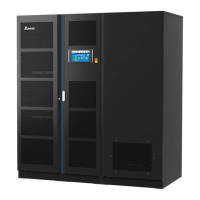
